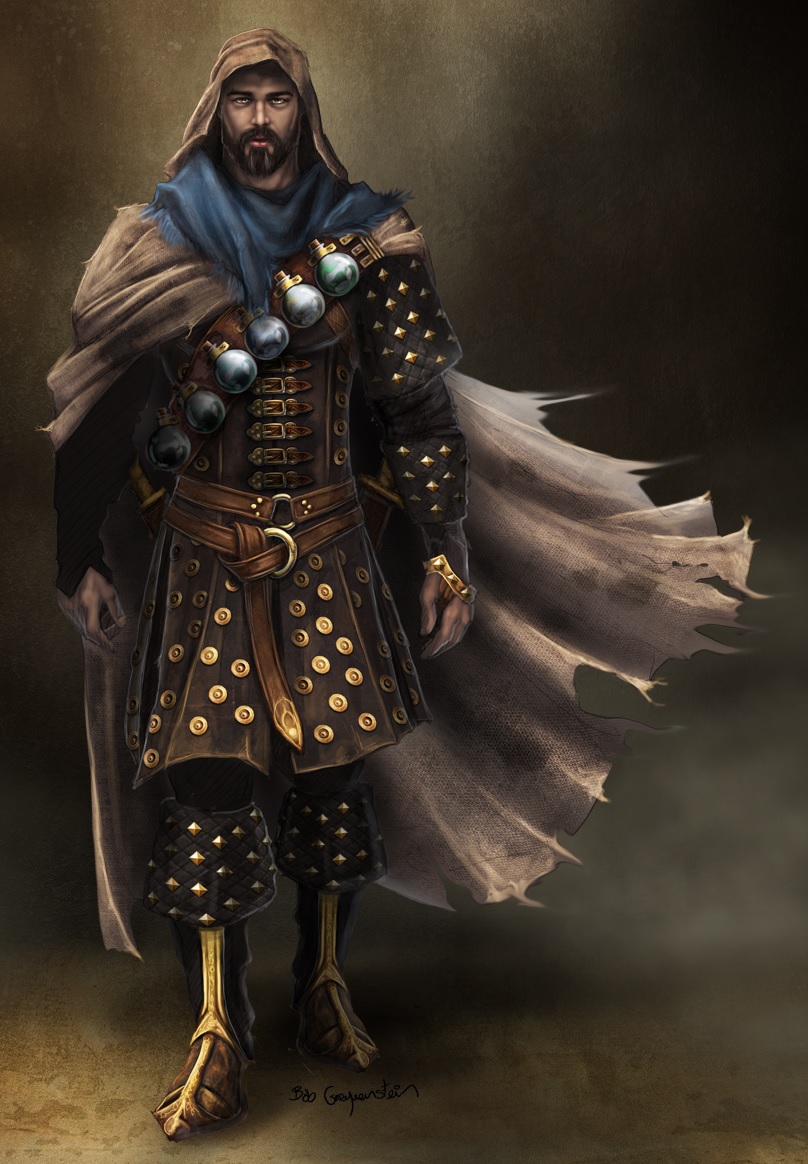Difference between revisions of "Studded Leather (armour)"
Tao alexis (talk | contribs) m (Tao alexis moved page Studded Leather (armor) to Studded Leather (armour)) |
Tao alexis (talk | contribs) |
||
| (7 intermediate revisions by the same user not shown) | |||
| Line 1: | Line 1: | ||
| − | + | [[File:Studded Leather.jpg|right|420px]] | |
| + | '''Studded Leather''' [[Armour List|armour]] is constructed of metal studding fastened to ordinary [[Leather Armour|leather armour]] in order to provide more protection against weapons. These studs may be pointed or may consist of small plates; the studs are set between layers of leather, concealing their effectiveness. Brigandine armour is a form of studded leather in which the metal is fixed as small oblong steel plates riveted to the leather. It is often worn with a hauberk, or padded jacket, for additional warmth in temperate climates, though this does not add to the armour's protection. | ||
| + | |||
| + | Studded leather armour is a common form of armour among [[Leader|leaders]] and [[Sub-chief|subchiefs]], as the metal in its construction, so that is it commonly twice as expensive as leather. It is constructed of 18 lb. of hardened leather and 2 lbs. of iron studs, requiring a sufficient [[Metal Armour (sage study)|armourer's]] skill. Studded leather is seen as highly fashionable and is ostentatiously displayed by wealthy aristocrats in both European and Asian courts. | ||
| + | |||
| + | A similar type of armour is described simply as "jack," which is made of small iron plates between layers of felt, canvas and leather. While most studs are riveted into studded leather, the plates in a jack are sewn into place. This form of armour is favoured by the French and Scots; it has spread to the New World, particularly English New England and the Dutch New Netherlands. | ||
| + | |||
| + | A Hindi and Moslem equivalent is described as a "coat of ten thousand nails," with a skirt that is split to the waist to make the garment more practical for riding. The Chinese employ a form that is used as parade armour for the Emperor's guards, called a "dingjia." This latter is sometimes combined with expensive cloths, particularly silk, to provide a rich, colourful appearance. The "kuyak" was developed by [[Haruchai|haruchai]] and is to this day also worn by the [[Grand Duchy of Moskva|Russian]] soldier. | ||
| + | |||
| + | Studded leather adjusts [[Armour Class|armour class]] -3 from 10, also described as a "+3." | ||
| + | |||
| + | |||
| + | See [[Armour List]] | ||
Latest revision as of 12:59, 6 June 2022
Studded Leather armour is constructed of metal studding fastened to ordinary leather armour in order to provide more protection against weapons. These studs may be pointed or may consist of small plates; the studs are set between layers of leather, concealing their effectiveness. Brigandine armour is a form of studded leather in which the metal is fixed as small oblong steel plates riveted to the leather. It is often worn with a hauberk, or padded jacket, for additional warmth in temperate climates, though this does not add to the armour's protection.
Studded leather armour is a common form of armour among leaders and subchiefs, as the metal in its construction, so that is it commonly twice as expensive as leather. It is constructed of 18 lb. of hardened leather and 2 lbs. of iron studs, requiring a sufficient armourer's skill. Studded leather is seen as highly fashionable and is ostentatiously displayed by wealthy aristocrats in both European and Asian courts.
A similar type of armour is described simply as "jack," which is made of small iron plates between layers of felt, canvas and leather. While most studs are riveted into studded leather, the plates in a jack are sewn into place. This form of armour is favoured by the French and Scots; it has spread to the New World, particularly English New England and the Dutch New Netherlands.
A Hindi and Moslem equivalent is described as a "coat of ten thousand nails," with a skirt that is split to the waist to make the garment more practical for riding. The Chinese employ a form that is used as parade armour for the Emperor's guards, called a "dingjia." This latter is sometimes combined with expensive cloths, particularly silk, to provide a rich, colourful appearance. The "kuyak" was developed by haruchai and is to this day also worn by the Russian soldier.
Studded leather adjusts armour class -3 from 10, also described as a "+3."
See Armour List
